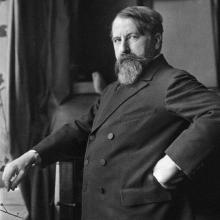Usability Engineering and UX
Simply Designing Ergonomically
Representing, Presenting and Conveying
What would a long-term research project be without an appropriate presentation of the results?! Many of our projects are mainly available on the Internet. In addition to the textual access, a visual and interactive representation of data is useful to attract both experts and interested laypeople to a topic.
Emotional, Affective Interaction
Users interact as people with our applications. It is therefore important to shape the emotional and affective experience aspects of human-computer interaction in a positive way. We therefore see the user experience as an indispensable task in the development of a digital product that accompanies the entire project.
“Don't let me think!” - At first glance, not thinking appears to be contradicting the complexity of scientific work. But simplicity is essential when it comes to accessing research results on the Internet. Because anyone who puzzles over operating mechanisms is less focused on the content.
The aim of our project-related UX engineering, graphic and interaction design is, among other things, to enable a low-threshold entry into a complex topic, to convey enjoyment of the object, to avoid frustration when using it and, at the same time, depicting complex relationships.
We are not trying to reinvent the wheel, but rather, as far as possible, fall back on tried and tested, familiar operating mechanisms and components. However, digital humanities projects bring with them numerous requirements that cannot be taken over one-to-one by a news site, a video database or a social media app. In these cases,we develop our own components, whereby we try to pick up on familiar things. We now have a pool of building blocks that can be adapted and reused if necessary in the interests of sustainability.
Neutrality: Digital Letter Editions and YouTube
For applications that we use every day, the sorting of the content is personalized. It is sorted and presented according to the criteria of profitability (advertising), algorithmically evaluated user behavior (“filter bubble”) and quantity (“likes” and “followers”). Users have less and less influence on what is served to them.
Exactly the opposite applies to DH projects and we discuss this intensively with those involved in the project. For example, if letters are sorted according to quantitative characteristics such as page number, that says nothing about the quality. Is a postcard from Thomas Mann perhaps more important than a 30-page letter from a rather unknown author? Should a gigantic ceiling painting be mentioned before a scribbled pencil drawing?
These questions show how closely a content-related issue in the humanities is linked to the subsequent presentation in the online portal and the functionalities and operating components made available.
Aesthetics
Our trained and experienced UX designers always manage to implement an appealing design that matches the topic. And we know that functionality and design always go hand in hand with user experience. The result is not just a beautiful site, but a good site. UX design is product design.





